by
Greg Lipstein
How can we use data and AI to help combat the effects of climate change?¶
The current generation of humanity is faced with a massive challenge. The climate around us is changing, and how we mitigate and adapt to its effects will have deep and lasting impacts for ourselves, our children, other species, and the planet.
A challenge of this magnitude calls for the best ideas, tools and technologies we have to offer. Undoubtedly, one such technology is artificial intelligence (AI). In recent years, advances in computing and data science have powered new capabilities for computer programs to learn patterns from vast amounts of examples and apply those learnings automatically and at scale. This approach has turned out to be very powerful, and we have seen its use rapidly expanding across industry and transforming the way organizations operate.
So, how can humanity draw on the capabilities of AI to more effectively respond to climate change? Even with increased awareness of the problem we're facing, it can be hard to know what organizations can actually do to take action.
Over the past few years, our team has run over 20 different machine learning competitions in the domain of climate change and AI, with over a million dollars awarded to developers of the top-performing approaches. These are applied problems where public, private, and social sector organizations are actively investing to develop better algorithmic solutions.
Several themes have emerged in preparing these competitions that have helped to tie together threads across different applications. From these, we've identified five distinct areas where AI is having an impact on climate action.
- 💧 Managing natural resources
- 🌪️ Disaster resilience
- 🐒 Biodiversity conservation
- ⚡ Energy efficiency
- 🛰️ Upstream enablers
Within each area, we'll share real-world examples that illustrate this impact, along with the types of data they use and the problems they address.
Let's take a look!
1. 💧 Managing natural resources¶
The first bucket is focused on how we monitor and manage natural resources like water, air, and forests. Having better estimates of how these resources are changing — both from climate change and in connection with decisions by landowners, public officials, and policymakers — will allow us to detect issues earlier and get a better sense for what actions are worth taking.
Types of problems: near-real time (NRT) estimation and monitoring, forecasting
Common data types: geospatial, satellite, LiDAR, ground and IoT sensors, meteorological
For example: Estimating snow water across the Western U.S. (with the Bureau of Reclamation)
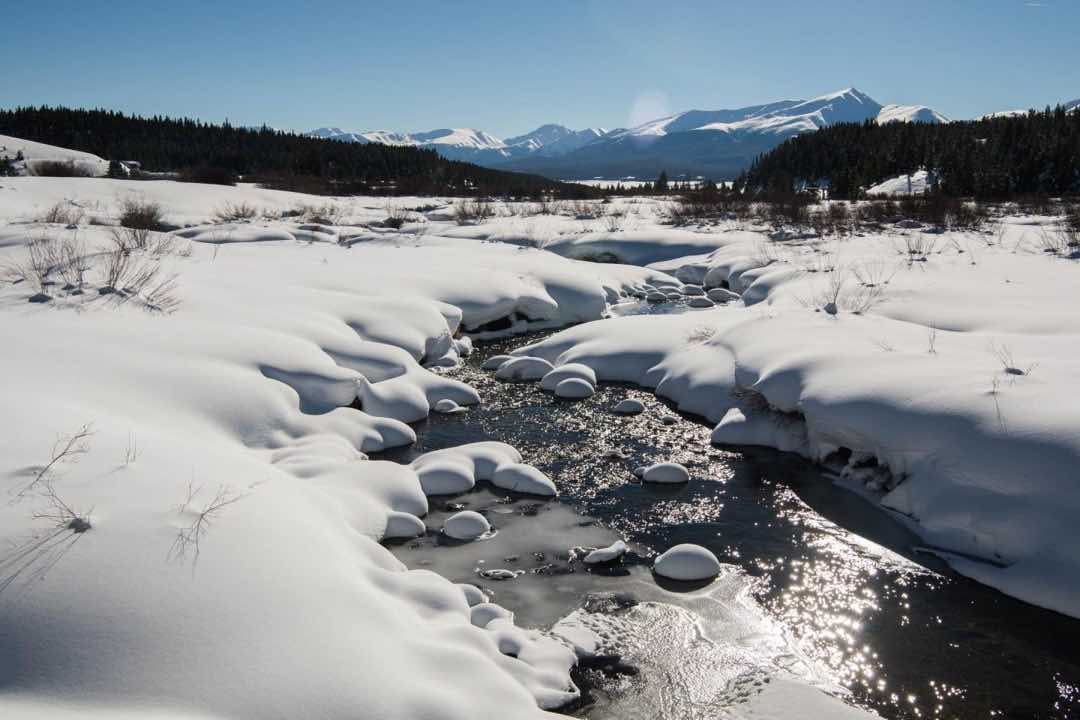
Seasonal mountain snowpack is a critical water resource throughout the Western U.S. Given the diverse landscape and shifting climate, accurate estimates of snow water equivalent (SWE) at a high spatiotemporal resolution are increasingly important to inform water management decisions and help respond to extreme weather events such as floods and droughts. While ground-based instruments can be used to monitor snowpacks, ground stations tend to be spatially limited and are not easily installed at high elevations.
The goal of the Snowcast Showdown challenge was to estimate SWE in real-time each week for 1km x 1km grid cells across the Western U.S. Participants could use real-time satellite, ground station, and climate data, as well as static data sources on elevation, soil, water, and land cover. The top solutions generated the most accurate estimates measured against over 42,000 new ground truth SWE measurements gathered in the 2022 peak snow and melt seasons.
Other sample use cases:
-
Estimating annual forest biomass (with University of Liege, Avoin, Mathworks): Use satellite data to estimate above-ground biomass, a widespread measure of carbon release and sequestration by forests.
-
Detecting harmful algal blooms (with NASA): As harmful algal blooms (HABs) are likely to increase with climate change, satellite and other geospatial data can help water quality managers monitor for the formation of new blooms.
-
Forecasting water output from cloud collection nets (with Dar Si Hmad, Tableau Foundation): Data from local sensors and weather stations can provide an advanced view into how much fresh water will be collected by fog nets for landlocked communities in Southwest Morocco.
-
Estimating daily air quality measures (with NASA): Satellite instruments and time series analysis can help deliver accurate, high-resolution air quality information to improve public health and safety.
2. 🌪️ Disaster resilience¶
The second bucket addresses the increase in extreme weather events and natural disasters like tropical storms, floods, and fires. Efforts using AI may target monitoring and response efforts when an event occurs, like tracking flood extent to inform the approach of emergency responders. They may also target preparation and mitigation efforts before an event, like identifying at-risk areas for building damage to prioritize retrofits.
Types of problems: Prioritization, near-real time estimation and monitoring
Common data types: Aerial imagery, satellite, geospatial
For example: Estimating the intensity of tropical storms from overhead satellite imagery (with Radiant Earth Foundation)
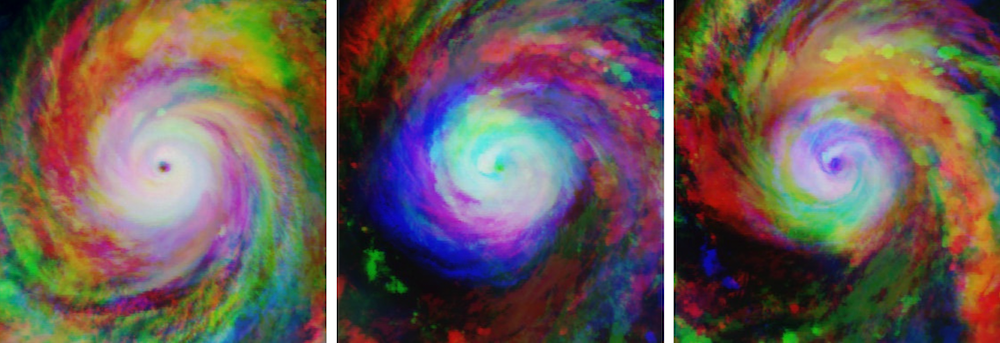
Hurricanes can cause upwards of 1,000 deaths and $50 billion in damages in a single event, and have been responsible for well over 160,000 deaths globally in recent history. During a tropical cyclone, humanitarian response efforts hinge on accurate risk approximation models that depend on wind speed measurements at different points throughout a storm’s life cycle.
In 2018, the NASA IMPACT team launched an experimental framework to investigate the applicability of deep learning-based models for estimating wind speeds in near-real time. They then worked with DrivenData and Radiant Earth Foundation to run a challenge to improve on this model, using satellite images captured throughout a storm’s life cycle. The top models achieved over 50% reduction in error (RMSE) as compared to the existing model, and have been carried forward for ongoing hurricane intensity estimation.
Other sample use cases:
-
Mapping flood extent from satellite radar imagery (with Microsoft Planetary Computer, Cloud to Street): Flooding has become the most frequent and costly natural disaster in the world, and the ability for synthetic-aperture-radar (SAR) satellite imagery to penetrate through storms and vegetation makes it particularly useful for monitoring events to help strengthen early warning systems, assess risk, and target relief.
-
Classifying rooftop materials in the Caribbean to inform retrofit efforts (with The World Bank, WeRobotics, Mathworks): Computer vision models identifying roof material can help evaluate disaster risk from drone imagery and drive faster, cheaper prioritization of building inspections and retrofits.
3. 🐒 Biodiversity conservation¶
The third bucket is focused on how we monitor and protect wildlife populations to determine when and how best to intervene for the sustainability of the world’s ecosystems. As climate change increasingly affects life-sustaining habitats on land and at sea, conservationists are using more data from trail cameras to drones in order to track changes in wildlife populations and study their behavior. Advances in computer vision are helping to process all the raw information from these observation systems, freeing up more time for humans to focus on interpreting and responding to the results.
Types of problems: wildlife detection, species classification, individual identification, measurement
Common data types: video, imagery
For example: Automated wildlife identification from camera trap videos (with the Max Planck Institute for Evolutionary Anthropology and Wild Chimpanzee Foundation)
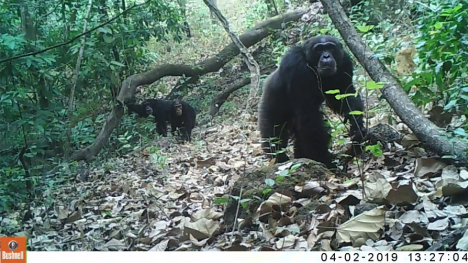
In recent years, camera traps have helped conservationists study and monitor a wide range of ecologies while limiting human interference. Camera traps are triggered by motion or heat, and passively record the behavior of species in the area without significantly disturbing their natural tendencies. However, they also generate a vast amount of data that quickly exceeds the capacity of humans to sift through.
To address this need, advances in computer vision can help automate tasks like animal detection, species classification, population estimation, and individual identification. Starting in 2017, DrivenData has partnered with the Wild Chimpanzee Foundation (WCF) and Max Planck Institute of Evolutionary Anthropology (MPI-EVA) on a multi-year effort to build machine learning tools for camera trap videos. Project Zamba (meaning "forest" in Lingala) has included two algorithm competitions and currently provides state-of-the-art models that help to drastically accelerate the speed at which wildlife videos can be processed and used.
Other sample use cases:
-
Photo-identification of endangered beluga whales from overhead drone imagery (with Bureau of Ocean and Energy Management, NOAA Fisheries, WildMe): Matching new images from annual photo-identification surveys to known individuals helps power more scalable population assessment and protection for endangered Cook Inlet beluga whales.
-
Estimating depth of wildlife in camera trap videos to inform population estimates (with Wild Chimpanzee Foundation, Mathworks): Using distance sampling methods, automated depth estimation offers substantial time savings for estimating species' population sizes at scale, which can help conservationists get rapid information on population changes, populations under threat, and the effectiveness of different conservation strategies.
-
Identifying wildlife on the Serengeti from camera trap images (with Microsoft AI for Earth, Snapshot Serengeti): For images as well as videos, computer vision models can help camera traps automatically label the animals they observe and generalize to new times and locations, relieving the burden on humans to determine where and what wildlife are present.
-
Monitoring catch from on-board video systems for sustainable fisheries (with The Nature Conservancy, Gulf of Maine Research Institute): Automated tools using video processing and AI help responsible fisheries comply with regulations, save time, and lower the safety risk and cost from an auditor on board.
4. ⚡ Energy efficiency¶
The fourth bucket deals with how we generate and consume energy. The production of electricity and heat is the largest single source of global greenhouse gas emissions, accounting for around 25% of all emissions. Efforts to decarbonize the economy involve increasing the efficiency in how we use energy while also expanding generation from clean power sources. AI is being used for a range of tasks where automated systems and better predictions can help, for instance by reducing waste from unnecessary use.
Types of problems: Forecasting, anomaly detection, optimization and control
Common data types: IoT, time series, meteorological, simulation
For example: Forecasting building energy consumption with limited historical data (with Schneider Electric)
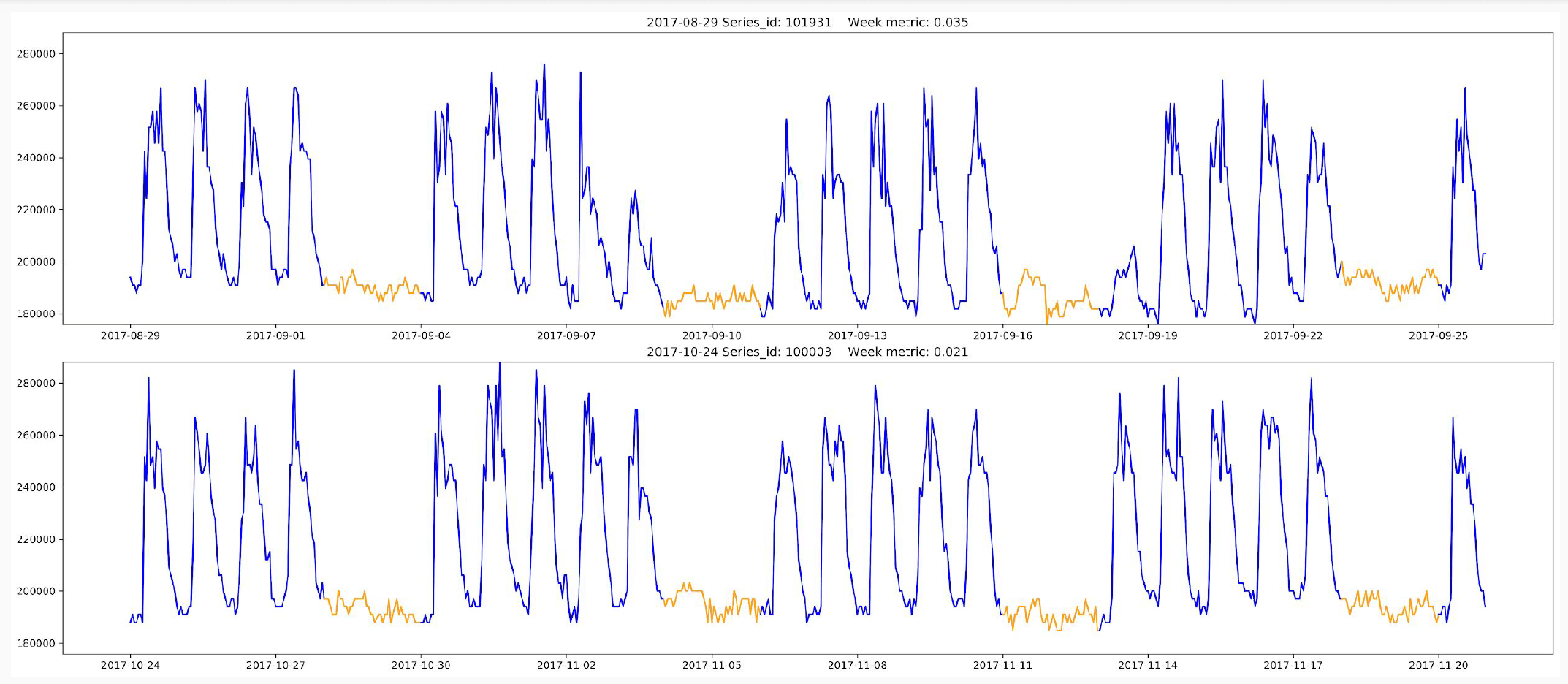
The ability to forecast a building’s energy consumption plays a critical role in energy efficiency. Good forecasts can help implement energy-saving policies and optimize operations of chillers, boilers and energy storage systems. They also provide a baseline for flagging potentially wasteful discrepancies between expected and actual energy use.
Energy managers rely on different planning windows, for instance hourly, daily, and weekly forecasts, to inform different decisions. Often these forecasts need to be built using limited data and still be as accurate as possible, while factoring in relevant information like holidays and weather patterns. Machine learning models that learn from and process all the data coming in are essential for building managers and automated management systems seeking to use energy more efficiently.
Other sample use cases:
-
Optimizing battery charging systems for renewable energy storage (with Schneider Electric): Combine traditional optimization methods and machine learning to build algorithms for controlling a battery charging system as efficiently as possible, helping increase the flexibility and reliability of energy storage.
-
Forecasting runway configuration changes at airports to reduce waste from delays (with NASA): Use real-time air traffic and weather data to predict runway changes at airports, giving flight operators more advance notice to manage schedules, reduce delays, and save fuel.
-
Detecting anomalies in energy use to identify potential sources of waste (with Schneider Electric): Commercial buildings waste an estimated 15-30% of energy used due to poorly maintained, degraded, and improperly controlled equipment, and quick-response algorithms can help managers find anomalies in energy use and elevate them for attention.
5. 🛰️ Upstream enablers¶
The fifth bucket looks at applications that are not focused on specific downstream use cases, but rather are intended to help enable a range of uses by improving the usefulness of interim data outputs further upstream. Many examples we have seen focus on important earth observation sources such as satellite and drones, which feed into many downstream use cases including forest monitoring, disaster planning, and emergency response.
Types of problems: Segmentation, mapping
Common data types: Aerial imagery, satellite, geospatial
For example: Mapping building footprints from drone imagery to support urban disaster risk management (with the Global Facility for Disaster Reduction and Recovery (GFDRR) / World Bank and Azavea)
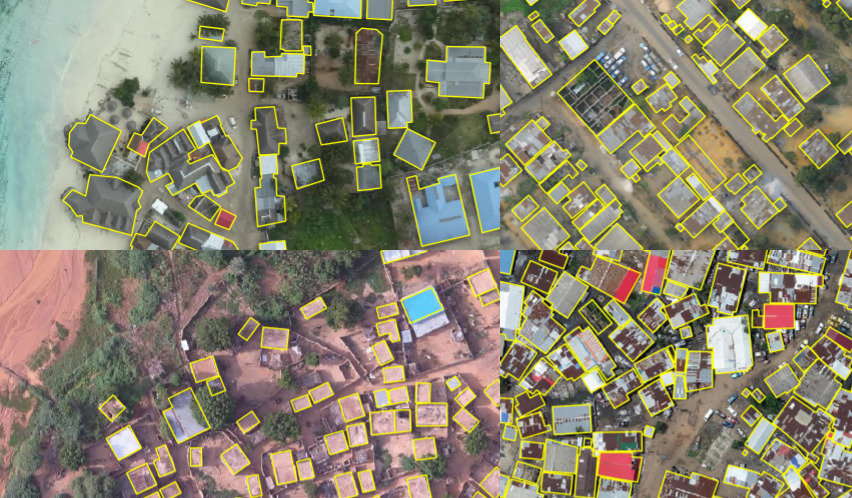
As urban populations grow, more people are exposed to the benefits and hazards of city life. To manage the risk of natural disasters in this dynamic built environment, buildings need to be mapped frequently and in enough detail to help communities prepare and respond. Building segmentation is a first step toward many important interventions that help mitigate disaster risk and enable more effective disaster response.
Machine learning algorithms are becoming critical to scaling these mapping efforts by learning to use aerial imagery to automatically create building footprints. In the Open Cities AI Challenge, high-resolution drone imagery from 12 African cities and regions covering more than 700,000 buildings was paired with building footprints annotated with the help of local OpenStreetMap communities. The resulting models were able to automatically generate accurate building footprints for a range of different sensors and urban environments across Africa.
Other sample use cases:
-
Identifying cloud cover interference in Sentinel-2 satellite imagery (with Microsoft Planetary Computer, Radiant Earth Foundation): Detecting and removing clouds in satellite imagery is a critical step to reduce noise and inaccuracy in a wide range of earth observation models, improving downstream applications like land cover classification, agriculture, and disaster management.
-
Rectifying 3-D maps from oblique satellite imagery to support time-sensitive applications (with National Geospatial-Intelligence Agency): The first images available from satellites are often taken from an angle, so models that can accurately map ground objects from different orientations help make satellite imagery more useful for time-sensitive needs like emergency response and navigation.
Conclusion¶
Action on climate change is critical and urgent. AI provides an important tool in this effort, and an increasing number of organizations are in a position to put it to use.
This post walked through ways we've seen teams already taking on this challenge. Hopefully these use cases can encourage more work in these areas and help inspire ideas in related areas. Given the size of this challenge, we need a wide range of organizations investing in solutions and good people working on them to bring the best intelligence and capabilities we have to bear.
Update: For those looking to get more hands-on experience in these domains, you can also check out our follow-on post for developers sharing available datasets and approaches from the competitions above.
Thanks to the reflections that led to this post from the DrivenData working group on climate change and AI: Peter Bull, Christine Chung Clark, Emily Dorne, Chris Kucharczyk, Jay Qi. Special thanks to the clients and partners above who have made this work possible, and to the competition participants whose hard work, ingenuity and passion have helped push forward new solutions to these challenges.
DrivenData is a social enterprise that brings the power of data science and AI to organizations tackling the world’s biggest challenges. If you have a problem to solve or thoughts on this post, we'd love to hear from you.
Banner image of the Earth is courtesy of NASA.
 LABS
LABS